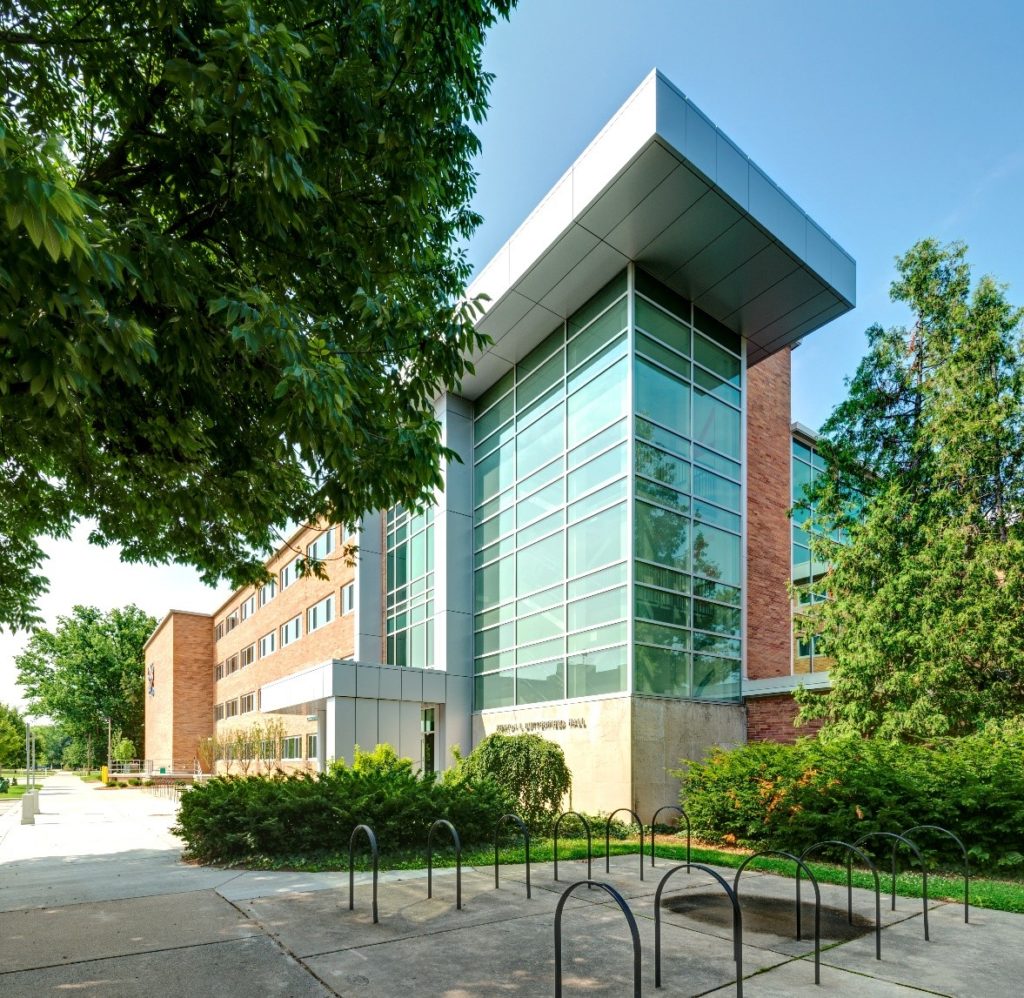


Mid-century buildings form the heart of many American college and university campuses. Built to satisfy the post-war expansion of student populations, these buildings are the work horse of higher education today. Ranging in age between sixty and seventy years old, these buildings have become familiar parts of our campuses, but they often aren’t iconic or character-defining structures on campus. As they age, they also have not kept up with changes in either building technologies or trends in education and they are now under-used and underperforming.

When modern buildings are the ones grabbing attention and promoting the strategic vision of the school, administrators and facility staff must ask: "does spending resources on underperforming buildings make sense?"
As an architect, I am often asked how to evaluate an existing building to determine when preserving it makes sense, and when it doesn’t. There are many tools and strategies available to not just improve, but transform, mid-century buildings on campus.
An occupied building is a useful building. If a school’s master plan does not include campus expansion or new locations for departments or activities, preserving an existing building is not only necessary, it’s required. Mid-century buildings are surprisingly durable. Despite perceived flaws, their sturdy cast-in-place concrete frames or extensive masonry facades can be expensive to duplicate and often offer a good starting place for a renovation. Especially for public colleges and universities, state funding often favors renovation over new construction. Even considering the unique challenges that come with renovation, it’s difficult to dismiss the fact that its almost always less expensive than building new.

Before we recommend strategies for transforming an existing building, we take time to understand the positive features of a building and determined if elements should be preserved. There are several categories we look at including campus character, building structure, systems, programming.
Campus Character
Structure
Does the structural grid, floor loading, and ceiling height work for current programs or those being considered for the building?
Systems
Many mid-century buildings often don’t meet modern standards of comfort, especially when they lack air conditioning. Bringing these spaces into the current century often requires larger engineering systems that simply require more space. Can systems be upgraded within the space constraints available?
Programming
Even if an existing building is being renovated to house the same program, can its organization be updated to accommodate changes in the way classes are taught and the places students are learning? Answering these questions helps guide a renovation project by acknowledging the assets of the existing structure as well as the problems that must be solved for a successful project.
Depending on how well the building is suited for its use, renovation work may be more focused on improving a building’s exterior and how it contributes to the look and feel of the campus. However, if a building’s spatial configuration is not aligned with its proposed use, demolition, reconfiguration or new additions may be required.
Recladding
Recladding a building (the process of applying a new exterior shell) can serve two functions. First, it offers an opportunity to improve thermal performance or address water infiltration concerns. Second, a new exterior can transform the look of a building.
Selective Demolition
Learning often happens in the spaces between classrooms and corridors. However, many mid-century buildings offer limited opportunities to accommodate these spaces. Selectively demolishing walls can help create new break-out areas, lounges, or informal meeting spaces along building corridors. This brings additional visibility to the activities of the building. Selective demolition can also help introduce natural light to parts of a building isolated at the interior. The “decompression” that comes through demolition also can give more room for solving accessibility concerns associated with entrances or changes in level.
Selective Addition
With so much focus on mixing activities and programs in campus buildings today, it’s rare that a single type of space will work for everything or everyone. Yet many mid-century buildings offer a repeating structural grid and room module that can be hard to adjust for these new uses. Selective additions create opportunities to add large bay or specialized functional areas while preserving, or improving, spaces that accommodate the building’s original use.

Though there are many things to consider before committing to renovating an existing building on your campus, it is often the right choice. Doing the early work to determine what renovation path is best suited to your project is critical to the success of the project and to ensuring a building will be well used into the future.